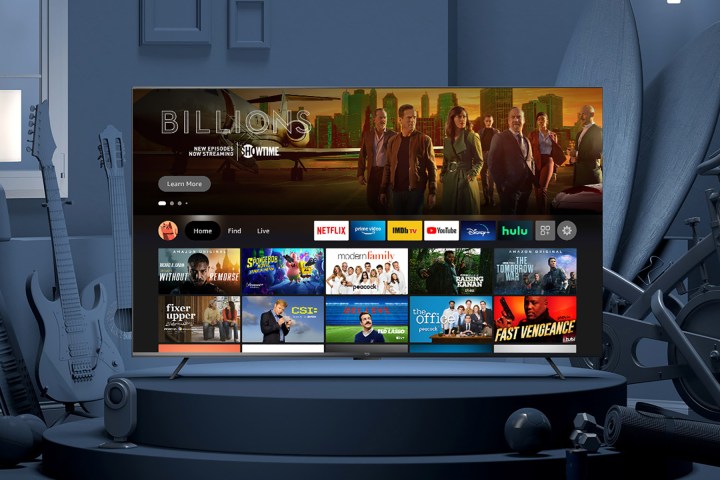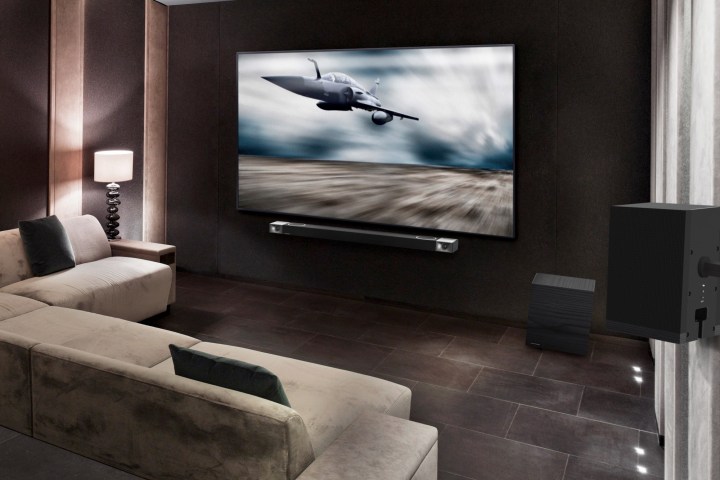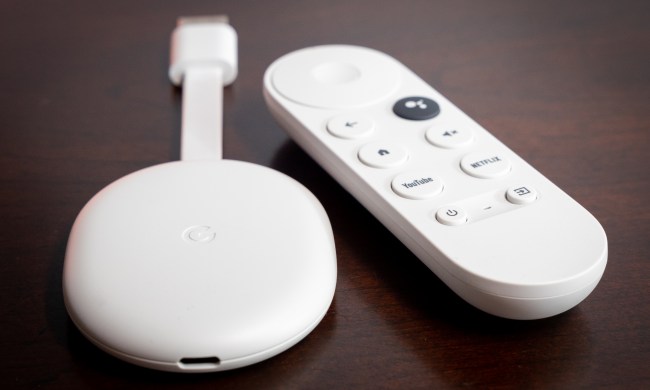In a matter of weeks, Comcast is going to try to sell you a TV. I can understand if you might be tempted by the idea of no longer needing a cable box to get cable TV. But, I implore you: Don’t do it.
One exception: If you love your cable box — and I mean if you really enjoy your cable box and its remote control and can’t imagine how you could ever watch TV without them — then maybe go ahead and buy one of the TVs they’ll be hawking.
Otherwise, I think buying a TV from your cable operator is one of the worst tech-based decisions you could make this decade. Not because the TV itself is garbage — the picture quality will probably be pretty good, actually. Rather, it’s all the junk your cable company is going to cram inside that TV that has me worried.
How did we get here?
In October 2021, Comcast announced a partnership with Walmart to sell so-called XClass TVs, made by Hisense, with Comcast branding slapped on the outside and Comcast’s software built inside. Comcast is doing the same in the U.K. through its Sky subsidiary with a TV called Sky Glass — a name that is unironically far too close to Spy Glass.
I believe this is just the beginning. Before long, other cable operators will follow suit. Here’s why I think we should all steer clear.
The user interface stinks
When was the last time you sat down to watch TV, grabbed your cable box remote, and thought to yourself, “Wow! I love this user interface! It’s just such a joy to find and start what I want to watch. It’s super quick to click around, too. No lag. No frustrating loading delays. It just … works for me! And, when my parents and grandparents come over, they have no problem using my TV at all! It all just makes so much intuitive sense!”
Never. The last time you said any of that was never. And you will probably never say that about anything onto which your cable company slaps its name.
“Not that bad” isn’t good, let alone great.
To be fair, I was talking about this with my colleague, Simon Cohen, and he claims that his Rogers Cable experience (licensed from Comcast) “isn’t that bad.” Two things leap out at me here: First, Simon is a Canadian and a stereotypically nice one at that. And second, “Not that bad” isn’t good, let alone great.
I’m not in a good position to conduct a legitimate poll (I blame the pandemic), but I am willing to put at least 1/100th of Bill Gates’ money on the fact that if you sat 1,000 test subjects in front of four TVs — one running Roku, one running Google TV, one running Amazon Fire TV, and one running Xfinity (or, insert your hated cable operator name of choice here) — 97 percent of them would choose one of the options that were not called Xfinity or anything that worked remotely like it. And the other 3 percent? Well … weirder stuff is happening in the world today.
They’re spies
OK, sure, they’re all spies. They — streaming platforms like Roku, Google, and Amazon — are all collecting data on what you watch, how long you watch, when you watch, if you watch with your cat or your dog, and whether you use real butter or imitation butter on your popcorn (don’t be an animal!).

The risk with giving your cable operator more insight into what you watch isn’t that they’ll be gathering Nielsen-style poll numbers for show ratings of the live TV you watch, it’s that they’ll know about everything else you watch, too, be it on Netflix, Hulu, Disney+, or HBO Max. A TV made by your cable company is, admittedly, just an extension of the data gathering that’s already happening to you. The problem lies in what your cable company can do with that information that Roku can’t.
In most markets, cable operators are also internet providers. So, even if you aren’t watching cable TV through cable, you still rely on that cable operator for the internet that gets you your Disney+ and HBO Max. That’s where a lack of net neutrality could become a big problem. All of these companies can do stuff with your data, but only your cable company has a handle on the pipe it comes through.
Your cable company has a vested interest in you watching Game of Thrones, for example, through your cable subscription to HBO as opposed to your streaming subscription to HBO Max. In the case of the former, your cable operator makes money. In the case of the latter, they make significantly less.
Unless that is, they were to use the information they gather about your viewing habits to jack up your internet bill. Or, worse, start messing around with your data cap.
Imagine if your data cap were to be manipulated in such a way that you felt compelled to watch HBO through a cable subscription instead of a streaming subscription. I don’t know about you, dear reader, but I don’t like the sound of that one bit.
No 4K/HDR/Dolby Atmos
While nearly every major streaming service offers content in at least 4K, and often with HDR or Dolby Vision and Dolby Atmos, cable operators are looking woefully outdated. Most cable channels are delivered in 720p at best. As a reminder, 720p is the lowest resolution that can be considered HD, and it’s been around for a decade.

This isn’t technically your cable operator’s fault, though. Networks are delivering content at this resolution and without added benefits like HDR. It’s worth pointing out, though, that Comcast owns NBC. So if it really wanted to improve your viewing experience, would it not make moves to do so?
Maybe it is. But it’s a technical hurdle broadcasters don’t seem super eager to jump. I get it, too. Traditional delivery pipes aren’t equipped to handle a move to 1080p or 4K en masse. To do it, cable operators will need to move to internet protocol (IP)-based delivery. Basically, cable would need to go the Netflix route.
Is it possible this is really the cable operators’ endgame?
Why are they really doing this?
To be a good reporter, I need to ask cable operators why they are going to put their names on TVs. And I have. We’ll see what they say. I don’t expect to get an answer that isn’t heavily vetted by lawyers and boilerplate enough to hand out to any reporter who asks (and there will be many of us.) And I also don’t expect full transparency. Why should I? Their business road map is understandably kept under lock and key. But that’s why I’m here speculating making an educated guess.
So as long as I’m making educated guesses, I have to think about where cable operators have skin in the game, how they can protect those interests, and how they might want to pivot to stay relevant. With that in mind, let’s explore some theoretical scenarios.

Let’s say Comcast makes a TV (they already do in Europe through their Sky subsidiary). Buying that TV is an option/alternative to using a rented cable box with your own TV. Customers buy that TV during a transition period and Comcast starts learning more about viewing habits than it ever has since its inception. Turns out, folks prefer streaming — it looks better, it sounds better, it’s on-demand, it’s easier to get to, it’s easier to navigate.
Don’t forget, net neutrality isn’t a thing right now.
So Comcast pivots to an IP delivery scheme. You now use your internet connection to get all of your TV content. If you stream cable content, then the data doesn’t hit your data cap. If you stream HBO Max or Disney+, it does hit your data cap. Don’t forget, net neutrality isn’t a thing right now. (Thanks a big bunch, former Federal Communications Commission (FCC) chairman Ajit Pai.)
Now, let’s posit that your cable company decides to get rid of cable boxes because this IP-based delivery thing is really working out well for them. But instead of replacing those old cable boxes with an IP-based alternative box, they decide that, instead of renting you a cable box, they’ll just rent you a TV with the tech needed already built inside it. Or, you can buy the TV if you want, but then you pay an access fee instead of a TV rental fee. Hmm … that sounds like diversified revenue streams to me!
Let’s take this cable TV dystopian nightmare to the next level. Let’s say you one day get wise to your cable company’s shenanigans and, fed up, decide to cancel your cable subscription entirely. You go 100 percent streaming — you could use Sling TV, YouTube TV, or any number of other options for your live TV and DVR needs. What might happen to your internet bill at that point? Your data cap?
Also, if your cable company had this much control over your TV hardware, could they decide to one day brick the TV? Samsung can brick its TVs, so it’s not a far-fetched notion.
Does this sound like a bad idea to you yet? It does to me. But, as I pointed out, this is all conjecture, and I’ve spent zero time in this article giving cable operators any benefit of the doubt. What if they only have the best of intentions. What might that look like?
Is real change on the way?
As cord-cutting has migrated from minor rebellion to mainstream movement, I’ve wondered how long it would take Comcast to pivot. Feeble attempts to bundle Netflix apps into its leased hardware notwithstanding, I’ve been surprised to see no real signs of adaptation. Until now. This feels like Comcast’s opening move in its long game to stay relevant amid a rapidly evolving market — Comcast’s own Queen’s Gambit if you will.

Is it possible that Comcast only has its customer’s best intentions at heart? I dug deep, and honestly, I have no reason to think so. No. Comcast’s history speaks for itself. I think Comcast needs to go in a new direction and maintain profits and control, and, perhaps I am just a bit pessimistic, but I don’t see this move taking a customer-centric direction. I’d love to be proved wrong, but only time will tell whether I’m wrong or right — and if I’m right, well, then it will probably be too late.
We vote with our wallets, folks. Keep that in mind when you consider purchasing a TV made by your cable company.



